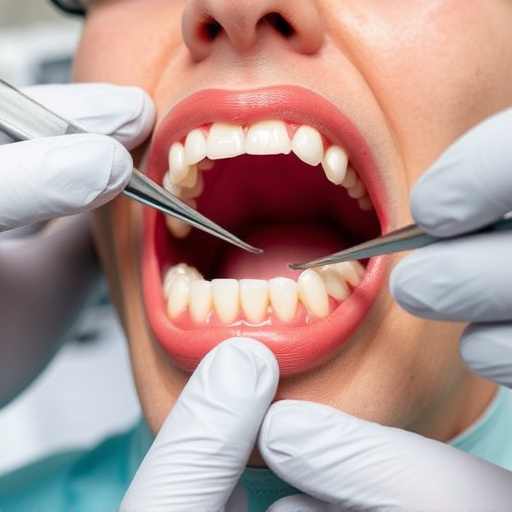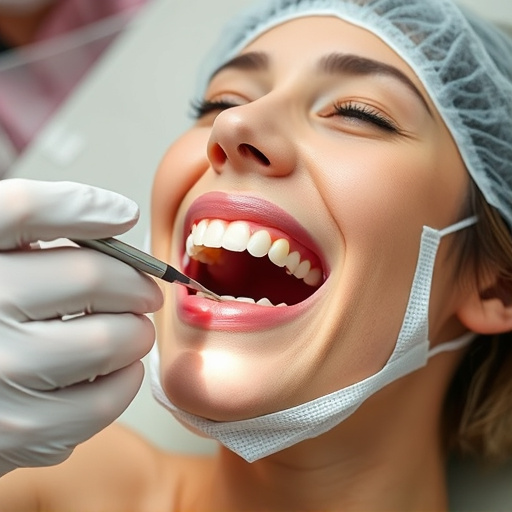Comprehensive Preventive Dentistry Program: Nurturing Oral Health for Peace of Mind
A comprehensive preventive dentistry program is essential for maintaining optimal oral health and av…….
Welcome to an in-depth exploration of preventive dentistry programs, a crucial aspect of modern oral health care. This article aims to guide readers through the various facets of this innovative approach, highlighting its benefits, global reach, and potential for transforming dental practices. By the end, you’ll understand why preventive dentistry is not just a trend but a necessary evolution in maintaining optimal oral health on a worldwide scale.
A preventive dentistry program (PDP) is a structured initiative designed to promote oral health through education, early detection, and the prevention of dental diseases. It encompasses a range of strategies targeting individuals, communities, and populations at large. The primary focus lies in avoiding dental issues before they arise or identifying them at their earliest stages, thus preventing pain, discomfort, and more complex treatments.
The key components include:
The concept of preventive dentistry dates back to the early 20th century when dentists began recognizing the value of educating patients about oral hygiene. However, it gained significant momentum in the latter half of the century with advancements in dental research and technology. The World Health Organization (WHO) played a pivotal role by incorporating oral health into its global health agendas, leading to the development of comprehensive preventive dentistry programs worldwide.
Preventive dentistry programs have left a profound impact on oral health globally. According to the WHO, over 3.5 billion people lack access to essential dental care. PDPs aim to bridge this gap by reducing the burden of dental diseases, which are often preventable. Countries like Japan, Singapore, and Australia have successfully implemented comprehensive programs, resulting in improved oral health outcomes for their populations.
The global dental care market is a significant industry, with preventive dentistry services gaining prominence. According to a 2021 report, the market size was valued at USD 374.6 billion in 2020 and is projected to grow at a CAGR of 5.8% from 2021 to 2028. This growth is driven by increasing awareness, advancements in technology, and rising demand for preventive care.
Governments and private entities are investing heavily in preventive dentistry programs. Public health initiatives often focus on community water fluoridation, dental screenings in schools, and education campaigns. Private organizations fund research, develop innovative technologies, and support dental access through charitable foundations.
PDPs contribute to economic systems by reducing the financial burden of dental diseases. A study by the American Dental Association (ADA) estimated that preventive dentistry saves the U.S. healthcare system billions of dollars annually by avoiding costly restorative procedures. Moreover, improved oral health can enhance overall well-being, leading to increased productivity and reduced absenteeism at work.
The digital revolution has transformed preventive dentistry through advanced diagnostic tools and technologies:
New materials have improved preventive treatments:
Emerging technologies include artificial intelligence (AI) for predictive analytics, smart brushes with real-time feedback, and wearable sensors that monitor oral health continuously. These innovations promise to revolutionize preventive dentistry by offering personalized, precise care tailored to individual needs.
Preventive dentistry programs operate within a framework of laws and regulations that vary across regions:
| Region | Key Regulations |
|---|---|
| United States | HIPAA (Health Insurance Portability and Accountability Act) ensures patient privacy, while state-specific laws govern dental practice standards. |
| European Union | The EU’s General Data Protection Regulation (GDPR) sets data privacy standards, and individual member states have dental practice regulations. |
| Australia | The Australian Dental Association (ADA) provides guidelines, and state health departments enforce dental public health policies. |
These policies shape PDPs by:
Despite its benefits, preventive dentistry faces several challenges:
| Challenges | Strategies for Addressing |
|---|---|
| Lack of Access: Limited resources and infrastructure hinder access to dental care in underserved communities. | Advocate for government initiatives to improve healthcare infrastructure and fund community dental programs. |
| Patient Non-Compliance: Some individuals lack motivation or understanding to follow preventive protocols. | Educate patients, involve families, and utilize behavioral change techniques to enhance compliance. |
| Stigma and Discomfort: Dental anxiety prevents many from seeking regular care. | Offer gentle, comforting approaches, provide relaxation techniques, and refer patients to dental anxiety specialists. |
| Technological Divide: Not all communities have access to modern dental technologies. | Collaborate with technology providers to make innovative tools more accessible and affordable. |
Criticisms of PDPs include concerns about over-treatment, cost-effectiveness, and the potential for widening healthcare disparities. However, these can be addressed through:
Singapore’s Ministry of Health launched a national dental program in the 1980s, focusing on school-based dental services, oral health education, and community outreach. This initiative led to a significant reduction in tooth decay among children. By providing free dental care and promoting oral hygiene, Singapore has achieved excellent oral health outcomes, with over 90% of its population having access to dental services.
Australia’s national water fluoridation program has been a success story since its inception in the 1950s. This public health measure has contributed to a decline in tooth decay rates, especially in children and elderly populations. The Australian Dental Association reports that water fluoridation is cost-effective, preventing thousands of dental procedures annually.
Non-profit organizations like Smile Foundation India have introduced mobile dental clinics, providing oral health services to remote villages. These clinics travel to underserved areas, offering free check-ups, cleanings, and basic treatments. This initiative has improved access to care and raised awareness about preventive dentistry among rural communities.
The future of preventive dentistry holds immense potential in:
Trends shaping the industry include:
To capitalize on these prospects, dentists and policymakers should:
Preventive dentistry programs represent a significant advancement in oral health care, offering a holistic approach to maintaining healthy teeth and gums. With its global reach, technological advancements, and growing recognition of its economic and social benefits, PDPs are poised for continued success. By embracing innovation, addressing challenges head-on, and prioritizing access to care, this field can ensure optimal oral health for generations to come.
Q: What is the primary goal of a preventive dentistry program?
A: The primary goal is to promote oral health through education, early detection, and prevention, reducing the need for complex dental treatments.
Q: How does technology enhance preventive dentistry?
A: Technology improves diagnosis (e.g., CT scans), enables remote care (teledentistry), provides advanced materials for treatments, and supports personalized care.
Q: Can you explain the role of policy in implementing PDPs?
A: Policies determine funding, access to care, professional guidelines, and research priorities, shaping the development and success of PDPs.
Q: What are some common challenges faced by preventive dentistry programs?
A: Challenges include ensuring access in underserved areas, patient compliance with preventive protocols, managing dental anxiety, and addressing technological disparities.
Q: How do case studies contribute to our understanding of PDPs?
A: Case studies provide real-world examples of successful PDP implementations, offering valuable insights into their design, execution, and impact for further learning and adaptation.

A comprehensive preventive dentistry program is essential for maintaining optimal oral health and av…….

Preventive dentistry programs are transforming oral healthcare by focusing on proactive care rather…….